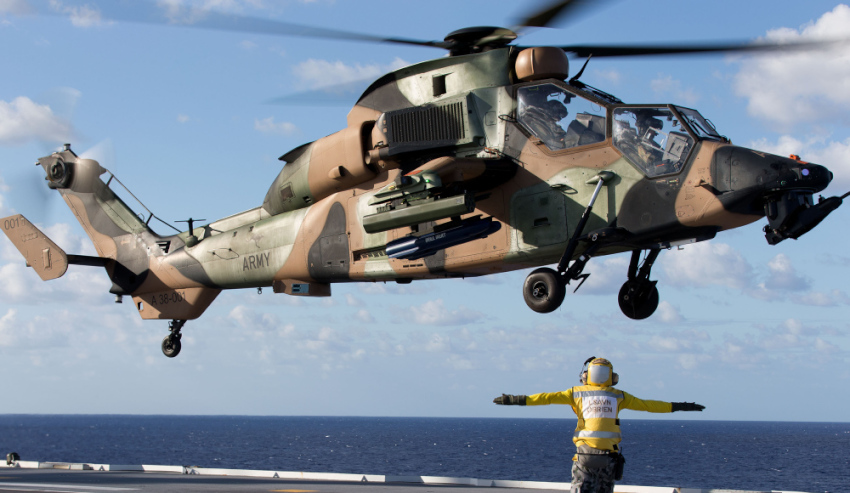The parliamentary joint committee of public accounts says it’s concerned that the Army’s Tiger Armed Reconnaissance Helicopter (ARH) project has received its second qualified audit finding in a row.
To continue reading the rest of this article, please log in.
Create free account to get unlimited news articles and more!
In its examination of the Australian National Audit Office (ANAO) Defence Major Projects Report (MPR) for 2016-17, the committee said there was a significant and continuing issue.
Specifically, the ANAO found that ARH Project Data Summary Sheets did not “accurately or completely represent the project’s maturity at June 30, 2017”.
ARH has experienced a number of problems, with the aircraft requiring substantial development and running almost seven years late.
ANAO said the ARH project maturity score in project data sheets indicated it achieved 69 or 70, or almost 99 per cent, at the time of transition from acquisition to sustainment in April 2017.
“Noting the caveats, capability deficiencies and obsolescence issues at the declaration of FOC (final operational capability) in April 2016, and considering that only two of the nine caveats applying at FOC have been lifted by the capability manager (in July 2017), this score does not accurately or completely represent the project’s maturity as at June 30, 2017,” ANAO said in the report.
The committee noted that the ARH project received a second qualified audit finding in a row.
“While it is encouraging that two remaining caveats are expected to be resolved within the next 18 months, the Tiger helicopters project will remain on the MPR into the future and this project will continue to receive close scrutiny by the committee,” it said.
Committee chairman Liberal senator Dean Smith said this year’s MPR reviewed risks, challenges and complexities facing major projects in general, as well as the status of 27 selected major projects in terms of cost, schedule and forecast capability.
“Every year the Department of Defence and the Australian National Audit Office work together to produce a consolidated review of selected major Defence acquisition projects, with the resulting report called the Major Projects Report, or MPR,” he said.
The committee made three recommendations aimed at continuing to drive improvements in transparent reporting of Defence major project expenditure.
It recommended that Defence report on progress in updating project maturity scores within three months.
Defence should also adopt a methodology that shows how acquisition projects can transition from spreadsheet risk registers to tools with better version control measures.
Defence should report the outcomes of the sea trials for the new Landing Helicopter Dock Landing Craft within three months.
The MPR was developed by Defence in conjunction with the ANAO with the aim of improving accountability and transparency of Defence acquisitions for the benefit of Parliament and other stakeholders.
Each year the MPR is automatically referred to the JCPAA in accordance with its statutory obligations to examine all reports of the Auditor-General.

 Login
Login







